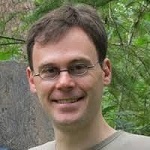Unconventional Photonic Information Processing Using Silicon Photonics
This webinar is hosted By: Nonlinear Optics Technical Group
03 June 2025 9:00 - 10:00
Eastern Daylight/Summer Time (US & Canada) (UTC -04:00)In this webinar, Peter Bienstman will discuss how integrated photonic reservoir computing, a bio-inspired information processing approach from the field of machine learning, is a promising approach for solving a number of problems in telecommunications, e.g. non-linear dispersion compensation. Dr. Bienstman has shown experimentally using silicon photonics chips that using a reservoir consisting of only 20 nodes can achieve sub-FEC error performance on on-off keying (OOK) signals at 32 Gbaud/s. Such a neuromorphic approach has the potential for being a high-speed low-power alternative for traditional electronic DSP.
The webinar will also cover how it has been shown in simulations that the scheme can be extended from simple modulation formats like OOK to complex coherent formats like 64QAM. We used the Kramers-Kronig (KK) detector configuration to achieve below-FEC-error-limit communications at 64 Gbaud/s, by including the nonlinear KK receiver in the training procedure.
Additionally, Dr. Bienstman will discuss how he has shown experimentally a completely new self-learning paradigm of optimizing the weights inside a recurrent neural network, without relying on an offline algorithm or on a generated error feedback signal. The network consists of ring resonators covered by a phase change material. By feeding the network with different binary sequences to be recognized, at powers above the plasticity threshold for the phase change material, Dr. Bienstman has shown that the network self-organizes to better identify these sequences, without external intervention.
Subject Matter Level: Introductory - Assumes little previous knowledge of the topic
What You Will Learn:
• Alternative paradigms for implementing machine learning in photonics
• How photonic reservoir computing can be an alternative to digital DSP to solve problems in telecommunication
• How phase change materials can make reservoirs self-adapting
Who Should Attend:
• People interested in neuromorphic photonics
• People interested in telecommunications
About the Presenter: Peter Bienstman from Ghent University
 Peter Bienstman received a degree in electrical engineering from Ghent University, Belgium, in 1997 and a Ph.D. from the same university in 2001, at the Department of Information Technology (INTEC), where he is currently a full professor. His research interests include several applications of nanophotonics, but most in particular unconventional photonic information processing.
Peter Bienstman received a degree in electrical engineering from Ghent University, Belgium, in 1997 and a Ph.D. from the same university in 2001, at the Department of Information Technology (INTEC), where he is currently a full professor. His research interests include several applications of nanophotonics, but most in particular unconventional photonic information processing.
